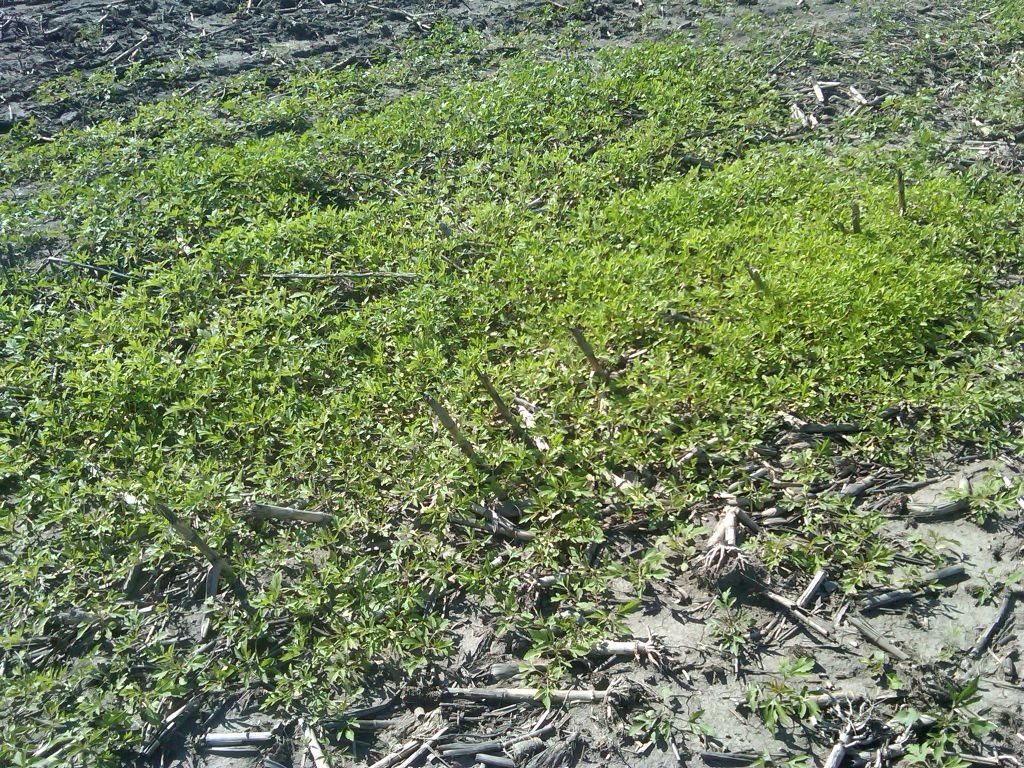 Giant Ragweed (GROWMARK)
Giant Ragweed (GROWMARK)
- Sound weed management involves selecting a herbicide program that will manage the driver weeds in the field, regardless of any supply concerns.
- A good weed management program is the key to having clean fields while reducing the need for any product that may be in short supply
- Following the steps below can help mitigate supply issues while avoiding drastic changes to a successful herbicide program
Throughout the fall, there has been much speculation about potential supply concerns regarding some of our commonly used herbicides, especially glyphosate and glufosinate. While some of these concerns may be warranted, your mileage may vary depending on your location. While the manufacturers of inert and active ingredients work through their supply chain issues, there are some steps we can take to set ourselves up for successful weed management in the 2022 cropping year.
Step 1. Use Full Rates of Preemergence Herbicides
If we focus on the basics such as utilizing preemergence herbicides to their greatest potential, we greatly reduce the need for many of the postemergence herbicides that may have supply concerns. Spraying residual herbicides prior to crop emergence limits the number of in-crop applications that are needed that may contain glyphosate or glufosinate. This also provides more flexibility when it comes to spraying the postemergence application by creating a larger window for that application to occur to labeled sized weeds. Lastly, preemergence herbicides go after the easiest stage of weed to control—the seed! The easiest weed to control is one that never emerges!
Step 2. Use Appropriate Rates of Glyphosate and Glufosinate
There has been some rate creep of these herbicides over the last several years. This may be due to the increased prevalence of herbicide resistance in some of our driver weeds, such as waterhemp, but it could also be due to their economical price. These staples have been used at an excessive rate in some cases because adding a “little more” to the tank did not increase cost significantly. This will change in the 2022 season, so we suggest using an effective rate, not an excessive rate.
Step 3. Lean on Other Chemistries
In corn, there are lots of alternatives to glyphosate and glufosinate. Use those products to control emerged weeds while also providing residual for weeds that may emerge later. In soybeans, look to some of our other traits with chemistries to control driver weeds. Think about using dicamba in dicamba-tolerant soybeans and 2,4-D in 2,4-D-tolerant soybeans to do some of the heavy lifting. Also, make sure to add a residual herbicide to the mix in soybeans to reduce the possibility of needing a second in-crop application.
Step 4. Use Adjuvants to Their Full Potential
Adjuvants such as ammonium sulfate (AMS), nonionic surfactant (NIS), crop oil concentrate (COC), and methylated seed oil (MSO) are used to increase consistency and improve herbicidal activity. In recent year, some of these products may not have been used at their full labeled rates or may have been left out of the spray tank entirely. As we lower the rate of a herbicide, such as glyphosate and glufosinate, the importance of full use rates of appropriate adjuvants is crucial to the success of the application. Yes, they will add a little cost to the herbicide program, but not nearly as much as continuing to use the high herbicide rates we have become accustomed to over the last several years.
Summary
Overall, use sound agronomic practices to manage weeds in this next year. Preparing a strategic plan can help ease the burden of any supply constraints that may occur, but always be prepared to pivot if needed. Bad outcomes are more likely when making drastic changes to a herbicide program when sound weed management strategies were used the previous season; by following these tips, you can avoid making dramatic changes to your herbicide program and still ensure good weed control.
Contact your FS Crop Specialist
Your FS Crop Specialist is here to help you with your nutrient management plans.
Learn more